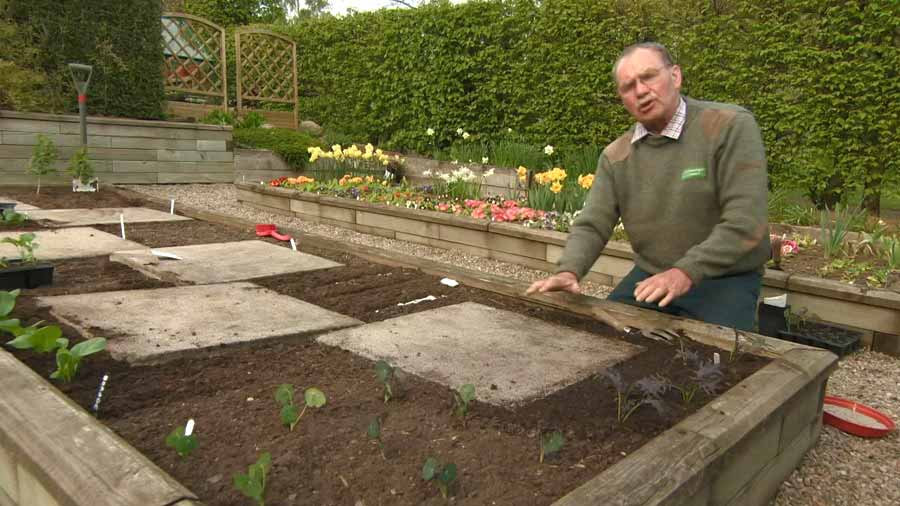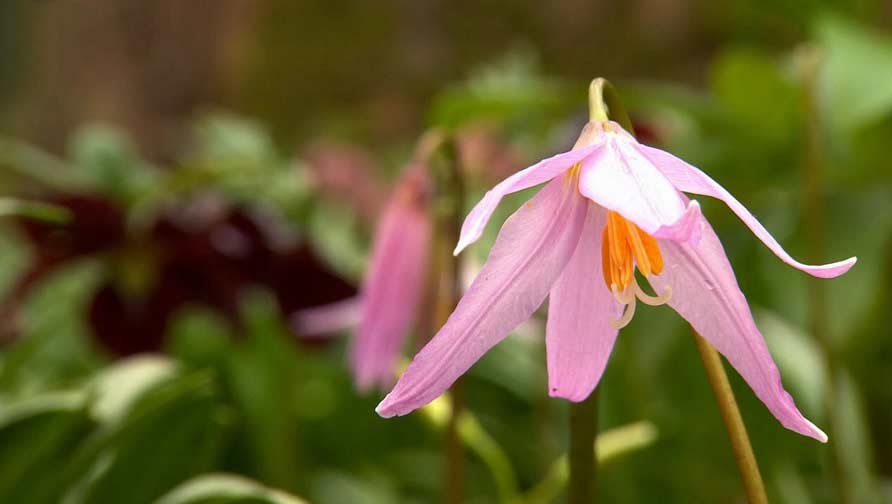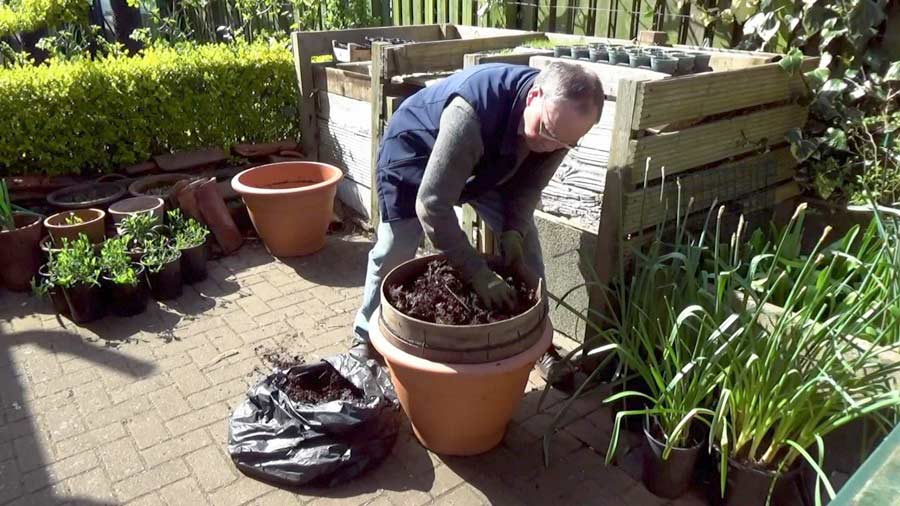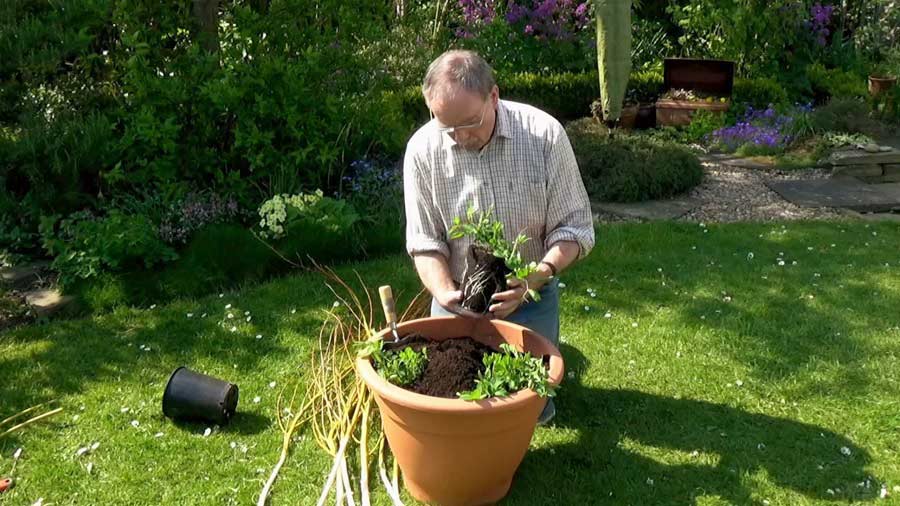The Beechgrove Garden episode 22 2020: In this episode, the Beechgrove team are looking to the future. George plants up a large container with what he calls a ‘bulb lasagne’, layering different kinds of bulbs for layers of long-lived colour in the spring. Meanwhile, Carole shows different methods of propagating new plants for next year, while Chris plans and plants a new border for year-round colour.
And Kirsty is looking at why green roofs could be a thing for the future.
Beechgrove is a hardy annual TV gardening series which sets out to deal with, glory in and celebrate Scottish horticulture and growing conditions. Beechgrove is and always has been a firmly practical, get-your-hands-dirty gardening programme which delights in success but also learns from failures in the garden and never takes itself too seriously.
The Beechgrove Garden episode 22 2020
Bulb Lasagne
A bulb lasagne is a clever way of layering up spring-flowering bulbs to create a display of flowers that lasts for months. Layering bulbs is really easy to do, and will give you a lovely display throughout the winter months for very little effort.
Flower bulbs will be perfectly happy to be layered up in a container. The important thing to get right is the order in which you plant them. The ones that flower first should be planted on the top layer, with the ones that flower next on the second layer, and so on.
How to plant bulbs in a pot
A cheerful container of spring bulbs is an easy way to create a splash of colour. By layering bulbs as shown here, you will get colour from lots of different flowers. Planting several pots in the autumn will really give your patio the wow factor in spring. You can also plant summer bloomers such as dwarf gladioli and dahlias in spring.
Bulbs bring spectacular colour to gardens across the seasons, but especially in spring. From cheery daffodils to elegant tulips, blowsy gladioli to demure snowdrops, there are bulbs for all styles and growing conditions. A container of miniature bulbs will brighten up even the smallest space, while some dramatic dahlias or cannas will make a big splash in even the grandest of borders.
Planted when dormant, bulbs may look unassuming, but after just a few months they’ll reward you with exquisite flowers. It includes a wide range of flower shapes, colours and sizes as this is a large and diverse group.
Most bulbs like a sunny spot with soil that drains well. They prefer moist soil during the growing season, but often need drier conditions when the foliage dies back and they become dormant.
Shade gardening – Beechgrove Garden episode 22 2020
Shade, due to trees or buildings, is an almost inevitable part of gardens and gardening. Understanding that plants respond differently to shade and that a wide range of shade situations are likely to be encountered is invaluable in planning and planting a garden.
Shade is the blocking of sunlight (in particular direct sunshine as opposed to diffuse light reflected from the sky) by any object, and also the shadow created by that object. To grow healthy plants in shady areas, it is important to match the degree of shade that a plant needs or will tolerate with available light. Unfortunately very few plants will thrive where shade is very dense, particularly when coupled with a dry impoverished soil.
All green plants depend on sunlight to manufacture the sugars that go to providing energy for the plant and for making the organic molecules that make up plants. Shade leads to lower sugar production and reduced growth and flowering and ultimately, in plants ill adapted to shade, death. Plants can ‘measure’ shade by using pigments that can detect far red and blue light and modify their growth habit in proportion to the degree of shade.
Plants can be considered as ‘shade avoiders’ and ‘shade toleraters’, to a greater or lesser degree. Sunlight is a mixture of wavelengths but the presence of shade alters the balance of colours which sophisticated systems within plants can measure and alter their growth according to the shade that they encounter.
Green roofs
Green roofs can range from roof gardens with raised beds and pots, to rolled-out green carpets, to shed roofs containing planting cells that are filled with soil or compost and planted up with low growing perennials and grasses.
The roofs can be intensive, with gardens on rooftops, with shrubs, climbers, perennials, bedding and even small trees, or they can be extensive, with green carpets of low maintenance creeping plants.
Extensive green roofs
These generally require a 5-15cm (2-6in) depth of growing medium that can consist mainly of lightweight inorganic materials such as perlite, leca, sand, rockwool and crushed tiles or concrete.
The typical layers of an extensive green roof include waterproofing and insulation layers, a root barrier membrane, a drainage layer, a filter layer and then the growing medium above. It may be necessary to incorporate drains into the system, which should be boxed in to prevent them clogging up.
Intensive green roofs
These are usually container or raised bed gardens. They need at least 30cm (1ft) depth of growing medium, much of which needs to be organic matter. Built-in raised beds require planning and construction by suitable architects and/or contractors.
When choosing containers, consider using lightweight plastic, metal, or fibreglass pots and troughs. Make sure there are ample drainage holes in the base. Use lightweight growing media such as multipurpose compost and rockwool. Compost can be further lightened by incorporation of perlite. Using polystyrene instead of broken pots to crock the bottom of pots will also reduce load.




